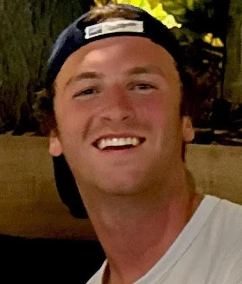


April 12, 2017 Press Contacts Andrew Hollinger Director, Communications 202.437.1221 [email protected] Museum Press Kit ROUNDING UP JEWS IN FRANCE AT THE VÉLODROME D’HIVER – “VÉL D’HIV” WASHINGTON – The well-documented responsibility of wartime French authorities and police in the 1942 Vél d’Hiv roundup of Jews was recently disputed by French presidential candidate Marine Le […]
The post Museum Statement on Le Pen’s Remarks on the Holocaust in France first appeared on Social Gov.

April 12, 2017
Press Contacts
Andrew Hollinger
Director, Communications
202.437.1221
[email protected]
ROUNDING UP JEWS IN FRANCE AT THE
VÉLODROME D’HIVER – “VÉL D’HIV”
WASHINGTON – The well-documented responsibility of wartime French authorities and police in the 1942 Vél d’Hiv roundup of Jews was recently disputed by French presidential candidate Marine Le Pen. The Museum strongly condemns Le Pen’s words and any attempt to diminish or distort the truth of what happened in France during the Nazi period.
An accurate understanding of the events of the Holocaust is critical if we are to understand the ongoing lessons this history holds for us today. It is especially important for leaders in the lands where the Holocaust happened.
After securing the agreement of the Vichy government, German officials and French police conducted roundups of Jews in both the occupied and unoccupied zones of France throughout the summer of 1942. The Vél d’Hiv was part of a series of roundups codenamed Opération Vent printanier (Operation Spring Wind) that took place across the country in spring and summer of 1942.
Preparations for the Roundup
Planning for the Vél d’Hiv roundup took place among René Bousquet, secretary general of the French national police; Louis Darquier de Pellepoix, Commissioner for Jewish Affairs under the Vichy Régime; SS-Hauptsturmführer Theodor Dannecker, head of Adolf Eichmann’s Judenreferat [Jewish Section] in France; and SS-Oberstürmführer Helmut Knochen, head of the German Security Police in France.
In order to guarantee the participation of the French police in the roundups, Nazi officials agreed to focus on foreign and stateless Jews, thus initially sparing the French Jewish population from deportation.
The Director of the local Paris Municipal Police, Emile Hennequin, sent precise expectations for the roundup to the police prefecture three days before the event. The roundup was originally set to take place from July 13–15, which included Bastille Day, the French national holiday. The holiday was not celebrated in the occupied zones of France, and in order to preclude local rioting, Nazi officials allowed French officials to delay the operation until July 16–17.
The German goal was that French police would round up 28,000 foreign and stateless Jews in the greater Paris area. They were to exempt “sensitive cases” such as British or American Jews. Although German authorities had originally agreed to exempt children under the age of 16, French Prime Minister Pierre Laval suggested for “humanitarian” reasons that children be arrested with their parents, unless a family member remained behind to care for them. Four thousand children were among those arrested in Paris.
In order to maintain a detailed record of the roundup, the police were to report the number of people they arrested each hour to their local prefecture.
July 16–17, 1942
Beginning in the early hours of July 16, French police rounded up thousands of men, women, and children throughout Paris. By the end of the day, the police had taken 2,573 men, 5,165 women, and 3,625 children from their homes. The roundup continued the following day, but with a much smaller number of arrests.
Approximately 6,000 of those rounded up were immediately transported to Drancy, in the northern suburbs of Paris. Drancy was at that point a transit camp for Jews being deported from France. The rest of the arrestees were detained at the Vélodrome d’Hiver (Winter Cycling Track), an indoor sporting arena in Paris’s fifteenth arrondissement.
Officials could have held few illusions of the unsuitability of the “Vél d’Hiv” for holding such a large population indefinitely. With the outbreak of war in 1939, it had been used to intern German nationals, mainly German refugees. In 1940 it housed interned foreign women. In both instances, conditions were deplorable.
Following the roundup of Jews in greater Paris, some 7,000 Jews, among them almost 4,000 children, were crowded together in the sports arena. There was scarcely space to lie down and the incarcerated Jews faced appalling circumstances. No arrangements had been made for food, water, or sanitary facilities. Only two physicians a shift were allowed in to treat the internees. The glass ceiling of the arena contributed to a stifling environment by day, as all ventilation had been sealed to prevent escape, and led to chilly temperatures at night.
Aftermath
After five days, Jews incarcerated at the Vél d’Hiv were transferred to other transit camps outside Paris. At Drancy, Pithiviers, and Beaune-la-Rolande, French police guarded these men, women, and children until transport to concentration camps and killing centers in the east. At the end of July, the remaining adults were separated from their children and deported to Auschwitz. Over 3,000 children remained interned without their parents until they were deported, among adult strangers, to Auschwitz as well.
More information about the Vel d’Hiv round up can be found on the Museum’s website as can information about the Holocaust in France.
A living memorial to the Holocaust, the United States Holocaust Memorial Museum inspires citizens and leaders worldwide to confront hate, prevent genocide, and promote human dignity. Its far-reaching educational programs and global impact are made possible by generous donors. For more information visit ushmm.org.
###
Tags:
Content from United States Holocaust Memorial Museum
Originally published at https://www.ushmm.org/information/press/press-releases/museum-statement-on-le-pens-remarks-on-the-holocaust-in-france
The post Museum Statement on Le Pen’s Remarks on the Holocaust in France first appeared on Social Gov.
originally published at HUMAN RIGHTS - USA DAILY NEWS 24

